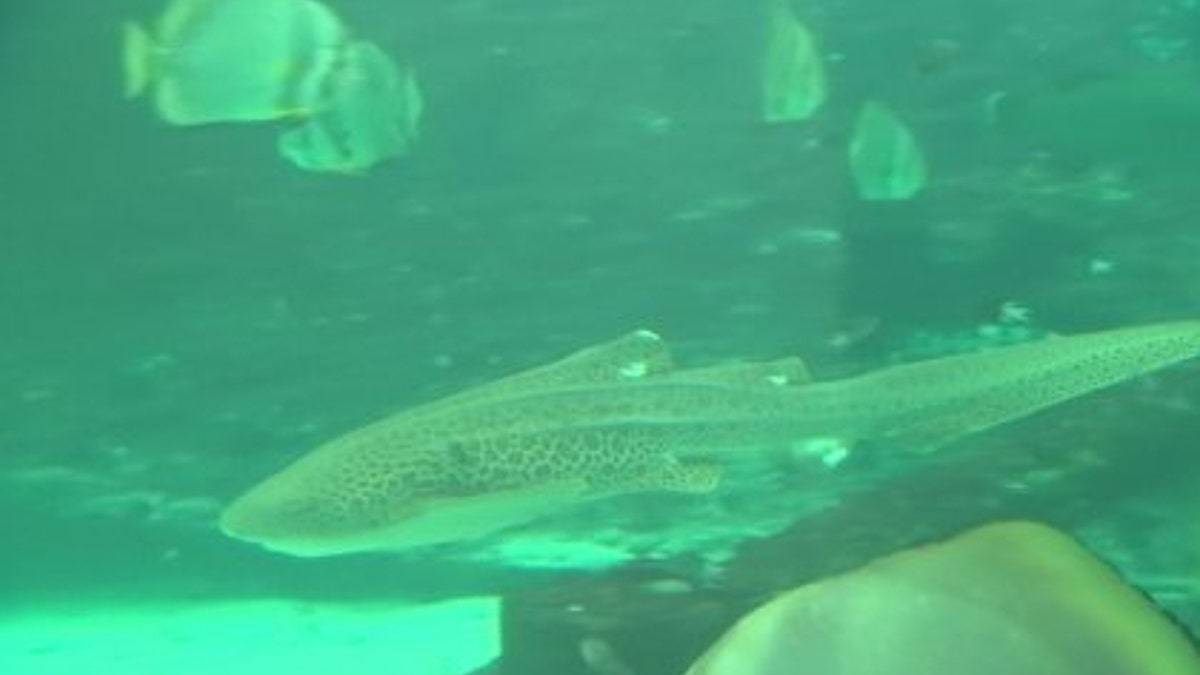
Leopard shark Leonie (The University of Queensland)
A leopard shark in a Queensland, Australia, aquarium has made history with a ‘virgin birth’ that scientists say could help save her endangered species.
Leonie the leopard shark is the first shark recorded to change from sexual to asexual reproduction, according to a press release from the University of Queensland.
HUGE GATOR SPOTTED TAKING STROLL IN FLORIDA RESERVE
Sharks can reproduce without a mating partner, according to Christine Dudgeon of the University of Queensland’s School of Biomedical Sciences, who documented Leonie’s changes at the Reef HQ Aquarium in Townsville, Queensland. None with a recorded sexual mating history, however, have ever made the change to asexual reproduction, she said.
“Leonie had pups with a male leopard shark until 2013, when the breeding pair were separated for space reasons,” Dudgeon explained.
SCIENTISTS GLIMPSE RARE RUBY SEADRAGONS IN THE WILD FOR THE FIRST TIME
In April 2016, however, Leonie surprised scientists when she hatched three eggs, despite having no access to a mating partner for three mating seasons. “We thought she could be storing sperm but when we tested the pups and the possible parent sharks using DNA fingerprinting, we found they only had cells from Leonie,” said Dudgeon.
Leopard sharks are also known as zebra sharks. The “leopard” name refers to the spots that emerge on adult sharks’ skins.
COWS AS BIG AS ELEPHANTS MAY SOON ROAM EUROPE
The incredible research findings are published in the journal Scientific Reports.
With the leopard shark identified as an endangered species, the discovery has major implications for conservation efforts, according to experts. “Leonie adapted to her circumstances and we believe she switched because she lost her mate,” Dudgeon said. “What we want to know now is could this occur in the wild and, if so, how often does it?”
Dudgeon plans to follow Leonie’s pups until they reach maturity to find out if the asexually produced sharks can have pups of their own with a male partner. “You lose genetic diversity with generations of asexual reproduction, so we’ll be seeing if these offspring can mate sexually themselves,” the researcher said.
